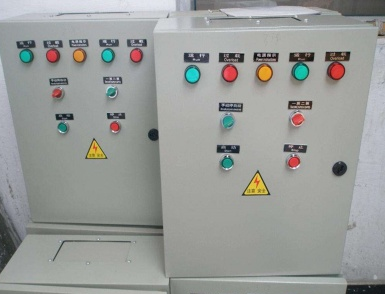Sewage lifting pump control system
The control system of the sewage lifting pump is a key part to ensure that sewage can be lifted and discharged efficiently and stably. The system usually integrates a variety of technologies and equipment to achieve automated and intelligent control. The following is a detailed description of the sewage lifting pump control system:
1. System composition
The control system of the sewage lifting pump is mainly composed of the following parts:
Sensors: including liquid level sensors, flow sensors, water quality sensors, etc., which are used to monitor the water level, flow and water quality of sewage in real time. These sensors are the "eyes" of the control system and provide accurate data support for the system.
Controller: Usually a high-performance microprocessor or PLC (programmable logic controller) is used as the core control unit. The controller receives the data from the sensor, processes and analyzes it according to the preset program and algorithm, and then issues the corresponding control instructions.
Actuator: including motors, pump bodies, valves, etc., used to execute the instructions of the controller to realize the start, stop, speed regulation and other functions of the pump station.
Human-machine interface: such as a touch screen or display screen, used to display the working status, parameter settings, fault alarm and other information of the pump station, and provide an operation interface for management personnel to remotely monitor and operate.
2. Control strategy
The control system of the sewage lifting pump usually adopts the following control strategy:
Liquid level control: According to the water level information monitored by the liquid level sensor, the operating status of the pump station is automatically adjusted. When the water level reaches a certain height, the pump station is automatically started for drainage; when the water level drops to a certain level, the pump station is automatically stopped. This control strategy can ensure that sewage will not overflow and avoid unnecessary energy waste.
Flow control: According to the flow information monitored by the flow sensor, the operating parameters of the pump station, such as speed, flow, etc., are adjusted to achieve efficient lifting and discharge of sewage. Flow control can ensure that the pump station can maintain a stable operating state under different working conditions.
Intelligent control: Using advanced algorithms and artificial intelligence technology, the collected data is processed and analyzed to predict future sewage flow and water quality, so as to make corresponding preparations and dispatch in advance. Intelligent control can improve the efficiency and quality of sewage treatment and reduce energy consumption and operating costs.
3. Underground installation and concealed installation
For underground and concealed sewage lifting pumps, their control systems need to take the following factors into special consideration:
Waterproof and moisture-proof: Since the underground environment is humid and there may be water seepage, the control system must have good waterproof and moisture-proof performance to ensure the normal operation of the equipment and extend its service life.
Heat dissipation and ventilation: The underground space is relatively closed, and the heat dissipation and ventilation conditions are poor. Therefore, heat dissipation and ventilation issues need to be considered when designing the control system to avoid equipment overheating and causing failures.
Remote monitoring: Since underground and concealed sewage lifting pumps are not easy to observe and maintain directly, the control system needs to have a remote monitoring function so that managers can grasp the operating status of the pump station in real time and perform remote operation and maintenance.





